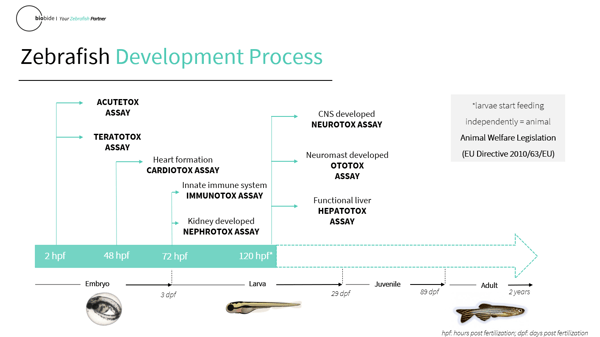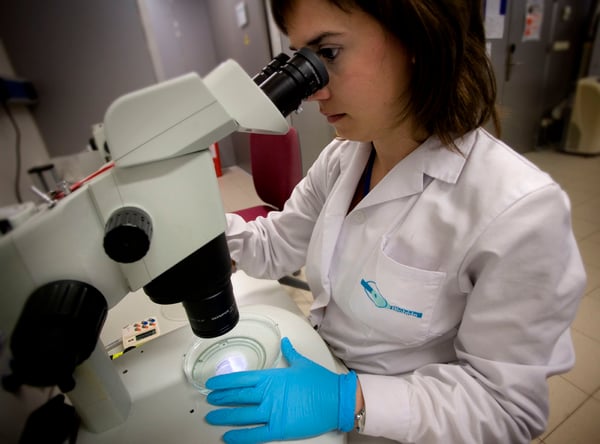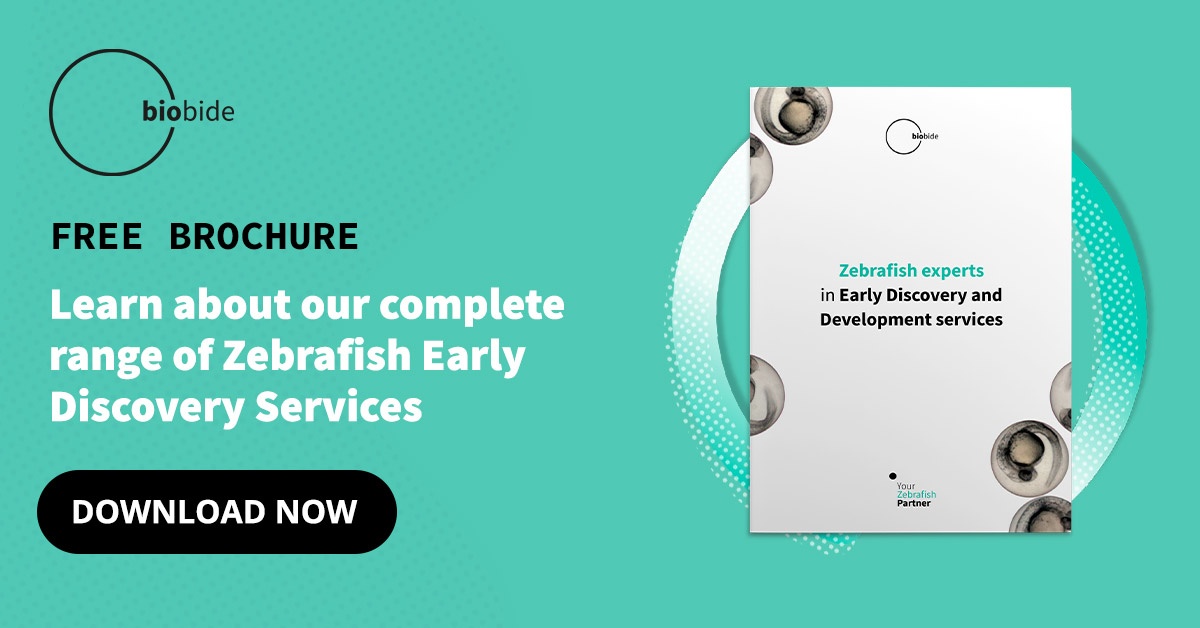Animal models have been used for centuries as an alternative to humans in scientific research. Small mammals, such as mice and rats, have typically been the norm. But these models have a series of drawbacks: they are costly to house and breed, and observing embryonic development is limited, making them less desired for High Content Screenings. Zebrafish, and their embryos in particular, have become a viable alternative option as you’ll discover below.
Zebrafish Embryos as Animal Models
Zebrafish began to show promise as a model for studying developmental biology in the 1980s. Since then they have become a highly valuable model due to their rapid development and manipulability. On genetic and molecular levels, advances made using zebrafish are usually translatable to humans. And zebrafish embryos specifically are ideal models for numerous types of research, which we’ll explore in this article.
Advantages of Zebrafish Embryos for Scientific Research
Other organisms, like rodents and fruit flies, have their place in research, yet few are as versatile as embryonic zebrafish. These small fish offer researchers a host of advantages over other models. Let’s take a closer look at each of those advantages.
- Highly Rapid Development - Zebrafish embryos and larvae develop extremely fast. Organogenesis typically occurs within 48 hours of fertilization and fish are fully developed and swimming around 5-6 dpf (days post fertilization), providing a convenient model for observation during High Content Screening (HCS).
- High Rate of Reproduction - Zebrafish breed year round and females produce hundreds of eggs on a weekly basis meaning a very low cost per assay compared to mice.
- Transparent & External - Embryos and the chorion are almost 100% transparent, allowing researchers to easily observe early development and effects of test compounds on developing bodily systems non-invasively.
- Small Size - A zebrafish embryo is typically about 07.mm in diameter and grows to roughly 3.5 mm by the time of hatching. This small size means hundreds of whole organisms can be assayed on a single 96 or 384 well plate, and large libraries of compounds can be screened efficiently.
- Affordability - Housing zebrafish comes at a very low cost compared to other animal models as they live in close knit aquarium shoals, and are adaptive to a range of environmental factors.
- Meets 3Rs Testing Regulations - Use of early stage embryonic zebrafish meets the stringent Directive 2010/63/EU on use of living organisms and follows the 3Rs (Replacement, Reduction, Refinement) of Animal Research.
- Chemically Permeable - Early embryos are highly permeable to small compounds which are added to the water environment and diffuse freely into the embryo.

What Areas of Research are Zebrafish Embryos Used In?
From vertebrate developmental biology and transgenic research to toxicology assays, zebrafish embryos are one of today’s leading in vivo animal models. Transparent zebrafish embryos are exceptionally favorable when using fluorescent protein markers which express themselves according to varying stimuli like gene mutation, drug toxicity and others. Dozens of transgenic zebrafish lines have been created to express fluorescent proteins in numerous bodily systems. Here are but a few examples of research areas where zebrafish are making a splash:
Genetic Disease Research
Zebrafish have orthologs in 82% of human disease-associated genes, making them especially translatable for genetic research. Human genes which have been sequenced to find mutations are identified and ‘knocked-out’ in zebrafish to mimic the disease environment. These transgenic, transparent zebrafish embryos can be monitored for changes on their neurological, musculo-skeletal and organ systems. Advances in the understanding of diseases such as melanoma, muscular dystrophy and kidney afflictions have been particularly successful.
Early Drug Discovery
In preclinical studies using High Content Screening (HCS) of small molecules, zebrafish embryos provide a method of quickly assessing toxicity and efficacy of new drugs. This saves both time and money in the very expensive process of Drug Discovery. In recent years zebrafish embryos have become a prominent model for the early development of new drugs in toxicology, cancer research, human genomics, developmental biology, and other fields.
Cosmetics and Agro Chemical Toxicology
The 3Rs of Animal Research (Replacement, Reduction and Refinement) were developed to spare animal suffering in scientific research, and is widely accepted internationally as standard. The use of zebrafish embryos as models at 5 dpf adheres to these principles and greatly reduces the use of mammals in later stages of research. Five dpf zebrafish embryos are commonly used to assess toxicology of pesticides and insecticides in aqueous environments. Zebrafish also show promise in cosmetics research when studying nanotoxicity, while still following the 3Rs, and the aforementioned EU directive on the protection of animals used for scientific purposes.
In summary, zebrafish and their embryos are uniquely suited to a wide range of genetic and toxicology studies. Their rapid development, transparent eggs and genetic similarities to humans make them a first rate whole-organism model. In cases where in vitro models do not suffice, and in vivo models like mammals don’t meet regulations, zebrafish embryos offer an affordable, effective and more humane alternative.






